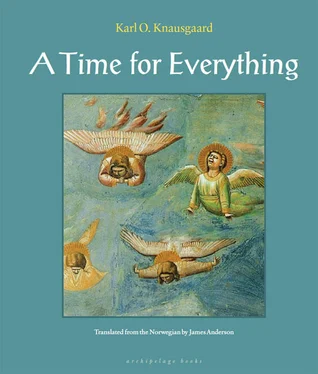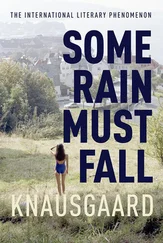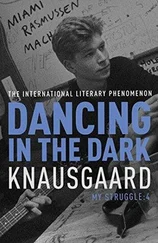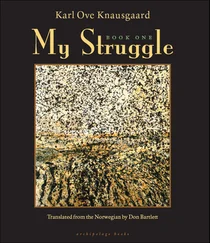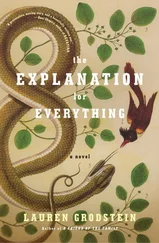He knows that he’s right. He knows that the angels are fallen and that they’re on earth. He knows that the way to heaven is barred to them. He’s written about it. To no purpose.
What happened?
Only two of the comments about On the Nature of Angels have come down to us, but as they resemble each other in tone as well as content, we can be pretty sure they’re representative of the contemporary attitude. Both ridiculed the work, and the work’s author.
Was he a comic figure? Was he a man people laughed at? Was what he wrote ridiculous?
For two years he’d lived with it. Then, in the spring of 1587, he’d made up his mind. If no one believed him, and many even laughed at him, he realized that it was pointless to write about what he knew. He had to demonstrate it. He had to find the angels. Only then would his work get the recognition it deserved. What he would do when he found them, he didn’t know. Capture one of them? Perhaps. Kill one of them? Perhaps. Angels were immortal, but the question was whether they still were angels. In the river they’d caught and consumed fish, they were imprisoned in the depths of their earthly existence, reliant on other life to maintain their own. And one of them had been very ill. So they could die.
But most of all he wanted to make contact with them. Talk to them.
The thought was intoxicating. They were here, and he could actually ask them about their state, about their lives. And where they came from, and their relationship to God, about God.
Maybe one of them could be persuaded to go along with him? Voluntarily show itself in the auditorium of the university in Montpellier?
Of course this was a dream. An idiotic dream. They had a reason for keeping themselves hidden from people. They must think that if people could see their hunger and wildness, they’d surely be hunted, captured, and burned at the stake, just like any old witch or heretic.
So he didn’t know exactly what he’d do. The most important thing was to find them. Even here he had no clear plan. He wandered somewhat haphazardly through the forests, asking everyone he met, shepherds, farmers, other itinerants, if they’d seen any angels. When he realized they were laughing at him behind their hands, he asked instead if they’d seen anything unusual.
“How d’you mean?” was the question he often received in return. “Unusual in what way?”
“Campfires in the forest at night, for example,” was his reply. “People who look strange, or behave oddly.”
But they would shake their heads. They’d seen fires sure enough, but there was nothing unusual about them: even foresters had to warm themselves at night.
He wandered the forests and mountains north of his native town throughout the spring and summer of 1587, and in October he was taken in at the German Benedictine monastery of Fulda, which was renowned for its library during the Middle Ages, and spent the winter there, until in April 1588 he began his wanderings once more, this time in the forests of southern Germany. This set the pattern for the rest of his life: the winters were passed either at home in Ardo or as a guest on an estate or monastery somewhere in Europe, the summers were spent journeying through desolate and unpopulated areas. Most often in Italy and Germany, but sometimes he went farther afield — we know that he was as far north as Lithuania, in the ancient forests there, and as far south as the Rodopi Mountains of Bulgaria.
During his first years he wrote almost every day. He wrote about the landscape he was traveling through, he wrote about the people he met and the animals he saw, he wrote about sun and stars, wind and water, he wrote about the leaves on the trees and the flight of birds, wasps’ nests and spiders’ webs. Occasionally he would sketch: river courses and mountainsides, cloud formations and facial characteristics, dissected animals with their entrails, arteries, muscles, and tendons meticulously exposed and drawn. Gradually the notes became shorter and the drawings more numerous, until in the last years he might not write a single word for months.
In the obvious delight he found in the world, the early notes divulge an easily enthused, almost childlike mind, but this doesn’t necessarily mean it was a naive one. Nor should the unsystematic and chaotic character of the notebooks be construed in that light. The fact that we today so easily regard the unrelated as a deficiency merely shows that we have been trained to look for and see the correlation between things and are no longer able to envisage a world without that correlation. Bellori contemplated everything he saw. Whether it was fish, waterfalls, trees, mountains, birds, insects, or flowers, he saw only the unique. If one reads his notes consecutively, from beginning to end, a feeling is gradually fostered of the infinity of the world. Not “trees” nor even “a tree” but this particular tree right here, now, as it is. Not “fish” nor even “a fish” but this unique fish right here, now, as it darts suddenly across the sandy bottom through the clear, sun-spangled water. Its tail’s rapid movement from side to side, the stream of water through its gills, the flat shadow gliding over the bottom beneath it. .
The question is how can one be sure that the method lacking in Bellori’s observations is merely a deficiency? How can we tell that Bellori wasn’t just some rambling fool who recorded everything he saw? Or to put it another way: what is it about Bellori’s notes that make them more than just a meaningless jumble of individual observations?
The answer lies in his religious speculations. Always running parallel with his observations, sketches, experiments, and the more journal-like jottings are his thoughts about the divine and its nature. While writing On the Nature of Angels , he studied every conceivable and inconceivable text in which angels figured, and thus formalized his intuitive insight into angelic mutability; now, in subsequent years, he extended the sphere of his hypothesis. Even though he still thought On the Nature of Angels a hugely significant work, it had its defects. The greatest of these, the one that exercised him now, was the actual theory of the angels’ fall. That they’d been carried away by mankind’s admiration. Even as he’d written it, he’d known somewhere within himself that it couldn’t be right, it was too petty, the angels were bigger than that, had to be bigger than that. But he had used it because he hadn’t been able to find any better explanation. This was what he tried to put right during these years. It was to this point that his thoughts would gravitate. And all the time he was certain that the answer had something to do with Christ. He had been the turning point, not just for man, but for the angels. It was after Christ’s death on the cross that they began to reveal themselves to mankind in such large numbers.
And so he turned his attention to Jesus Christ. This was the rhythm of his life: roam and write in the summer months, read and make notes in the winter. One assumes that Bellori’s choice of winter quarters was largely dictated by what literature it had to offer; this must at all events have been the case in 1592, when he was the guest of the Guarnieri family near Ancona, where the palace library contained, among other things, the unique, Apocryphal Gospel of Joseph (the brother of Jesus) in the form of a longhand manuscript from the third century, from which Bellori often quoted in subsequent years, and the insights he gleaned from it gradually influenced the view of the world that emerges from his drawings and written notes, even if only indirectly. Especially interesting in this regard is the fact that toward the end of his life he wrote less and less often. When his notes ceased entirely for two years, from 1603 to 1605, the last sentences were: We know nothing. Nor is there anything to know .
Читать дальше
